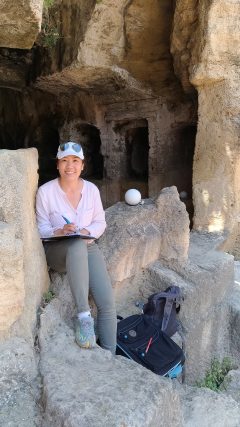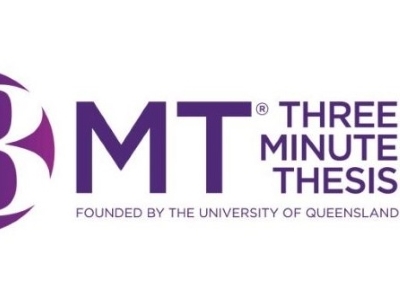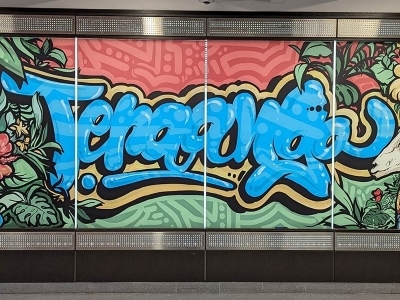 Michelle Duong, a Master’s student in the School of Architecture is currently part of a team at the Carleton Immersive Media Studio (CIMS) which is implementing, developing, and improving site recording data processing workflows for heritage site documentation.
Michelle Duong, a Master’s student in the School of Architecture is currently part of a team at the Carleton Immersive Media Studio (CIMS) which is implementing, developing, and improving site recording data processing workflows for heritage site documentation.
CIMS is a research lab that is part of the School of Architecture. It has five streams of research including; Digitally-Assisted Fabrication, Simulation, Digitization, Building Information Modelling, and Digitally Assisted Storytelling (DAS). There are currently over 50 students employed at the lab from various disciplines. Duong is working with a team under the Digitization stream to create a digital record of Nea Paphos, an ancient city that lies within a modern city.
“The project I’m on is documenting Nea Paphos, a UNESCO World Heritage Site in Cyprus,” explained Duong. “The main areas of focus include a series of tombs dating back to the 4th century BC called the Tombs of the Kings, an unstudied area proposed to be a series of underground workshops called Fabrika, and the Roman mosaics in the Residential Area. In the field, we surveyed, laser scanned, and photographed the site for photogrammetry (terrestrial and aerial using a drone) – to produce a digital record for the purposes of conservation.”
Duong has been working at the CIMS lab since January of 2017. She started on the Digitally Assisted Storytelling team with Dr. Stephen Fai and Katie Graham where they created narratives of cultural heritage for public dissemination.
“While at CIMS I also helped to organize the CIPA conference on Digital Workflows for Heritage Conservation with Dr. Mario Santana, held at Carleton,” shared Duong. “Both opportunities strengthened my interest in architectural conservation and I decided to complete the Graduate Diploma in Architectural Conservation (GDAC) program at Carleton last year. The skillset I developed from the GDAC program opened up the opportunity to work with Dr. Santana on the documentation project in Nea Paphos, Cyprus, in collaboration with the Getty Conservation Institute (GCI) and the Department of Antiquities in Cyprus (DoA).”
This past summer Duong, along with the rest of her team at CIMS, digitally documented Nea Paphos and processed the data that they captured.
“I have stayed on part-time with the team since I have started the Master of Architecture program this fall, as well as participating in the NSERC CREATE Heritage Engineering program,” said Duong.
The grad student notes that the outcome from the Nea Paphos documentation project will be used to inform the master conservation plan of the World Heritage Site. This will not only directly impact many facets of the site but this will also impact the management of tourism.
“The data we capture and process could, in the future, be used to create narratives and interpretive content that visitors to the site could interact with,” explained Duong. “These narratives could also become available online resources, or the data could be made available to other researchers and academics.”
Another example, one mandate of Project Anqa (a project recently completed at CIMS) was to ensure the data is accessible and downloadable by the general public and so all the files were uploaded to Scholars Portal Dataverse, a platform hosted by the university libraries of Ontario.”

Duong also attended the 27th annual CIPA conference in Ávila, Spain this past September.
“I presented two papers on behalf of my colleagues at CIMS, both of which were accepted into the ISPRS Annals,” shared Duong. “The first paper was about Project Anqa, Presenting the Built Heritage of Damascus, Syria through Digitally-Assisted Storytelling. I was not one of the authors of the paper, but I am familiar with the workflows of the project and so I was asked to present the paper on their behalf. The second paper was about the Nea Paphos project I described above – Documenting Nea Paphos for Conservation and Management. They were both in sessions about International Cooperation in Heritage Documentation and Conservation, and both were well received.”
Dr. Santana from the department of Civil and Environmental Engineering has been supervising Duong throughout the Paphos project.
“He has provided the training and resources for historic site recording, but more importantly he has been securing opportunities and funding for us to be able to do this research,” emphasized Duong. “Having research partners is a fundamental part of providing opportunities to students. Further, Dr. Santana gives us space to experiment with our processes and workflows. Dr. Barazzetti has also been an incredible resource for us and is overseeing the GIS platform on which all our processed data will be hosted. He helps us to better understand the theories behind the processes so we can find solutions and aim for better results.”
Duong is hoping she can combine this research in historic documentation with a project in architectural conservation.
For more information about the Master of Architecture, click here.
You can find out more information about the Graduate Diploma in Architectural Conservation by clicking here.
Friday, January 3, 2020 in Grad Student Research, News
Share: Twitter, Facebook



